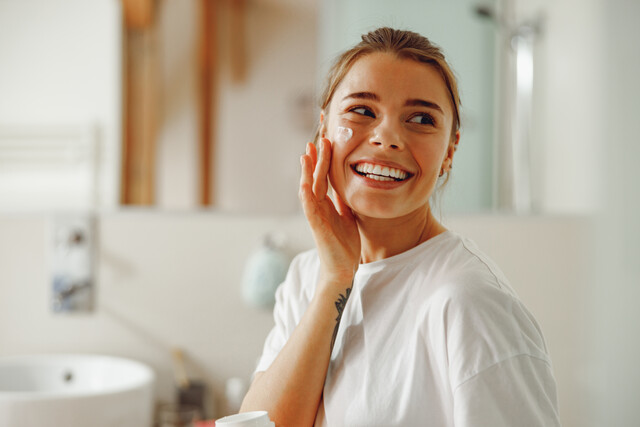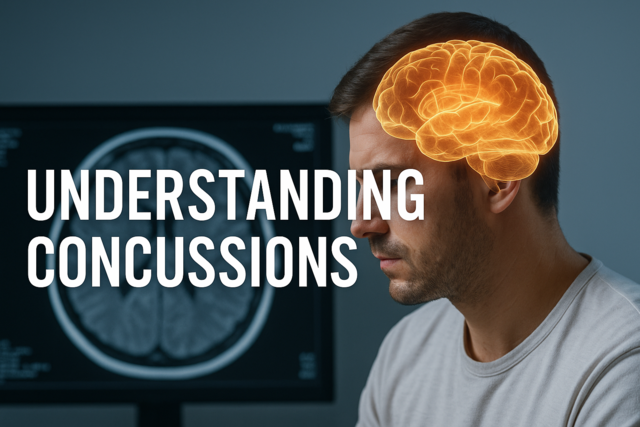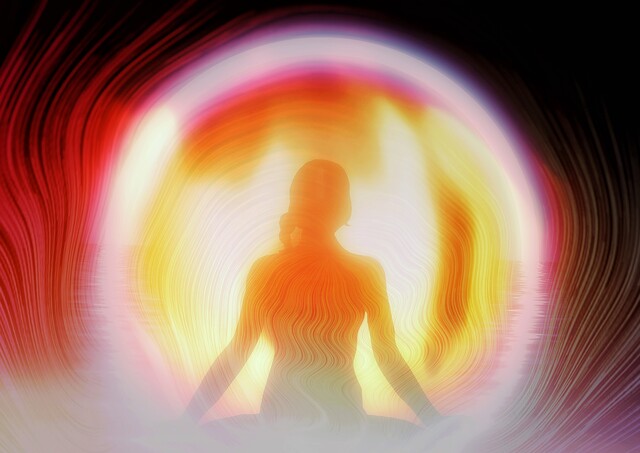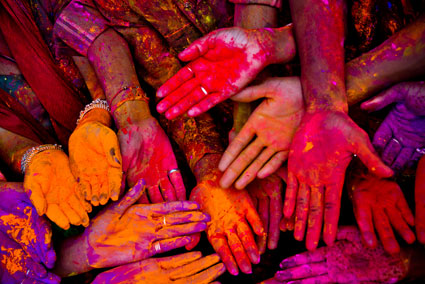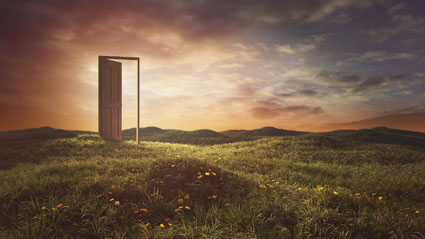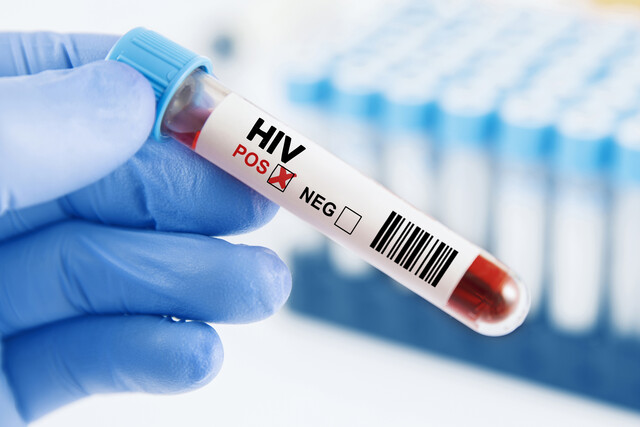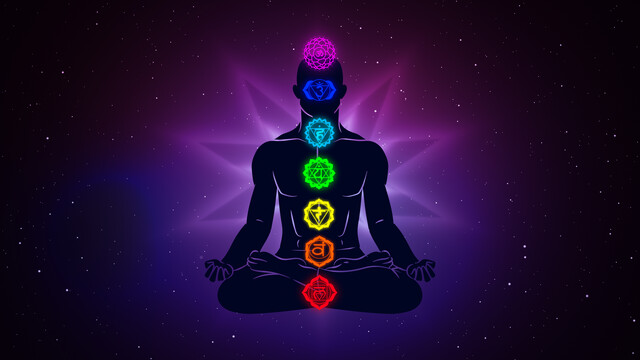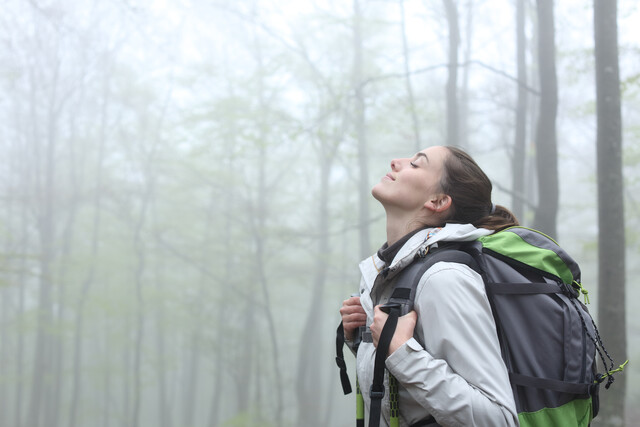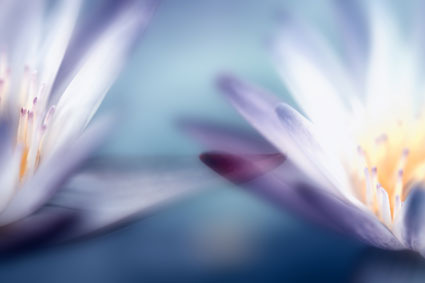Their revitalization and increasing popularity over the last few decades or so has seen them firmly categorized as "modern" health approaches - that is alternative approaches to straight pharmaceutical or surgical treatments. A few excellent examples would be Ayurveda, Traditional Chinese Medicine (usually referred to simply as TCM), Tibetan medicine and Kanpo (Japanese herbal medicine).
The word 'complementary' means working alongside. You could take that to mean working alongside other health-care providers which would naturally include the medical profession. The word 'medicine' means the art of restoring and maintaining good health.
Complementary and Alternative Medicines (CAM) provide natural and different approaches to healthcare, including different techniques for treating the whole person.
Many CAM disciplines which have been used for thousands of years have subsequently been adapted for more modern approaches to treatment. All of which work to heal the whole person rather than one condition or symptom. In addition, the energy or life-force of the individual is also considered and supported.
What is the Modern Day Role of Complementary Medicine?
For many years now growing numbers of people have been trying out and continuing to use alternative medicines, simply because traditional medicine doesn't work satisfactorily enough for them.
A survey of a few years back (around 2004) conducted by the National Center for Complementary & Alternative Medicine of the United States, revealed that approximately 38% of Americans used alternative medicine in 2002. You can imagine that percentage (with the growing popularity of CAM) could now probably be closer to 42 to 45 or even as high as 50%.
There is disagreeing data as to how many Americans have actually tried acupuncture with one study saying approximately 10% have either tried or regularly utilize acupuncture treatment and another, from the US Dept of Health (2004) saying only 4% have - either way, that is still a fair number translating to some 30 million or 12 million respectively. Either percentage is a fantastic result for acupuncture, particularly so as it has only been in the US now for about 30 years!
You shall be interested to know that acupuncture is particularly popular as far as CMAs are concerned, being more popular than homeopathy, four times more popular than naturopathy and ten times more popular than ayurveda!
Some definitions to start with (or what do all the different names mean?)
I know when I first took an interest in the efficacy of Acupuncture, I felt sometimes that people involved were speaking either in a foreign language or acronyms.
Alternative Medicine -used to signify that this medicine was an alternative to mainstream medicine. Sometimes also referred to as unconventional or unorthodox medicine simply because it was usually regarded as the opposite to orthodox/conventional medicine.
Allopathic, Orthodox or Conventional Medicine - mainstream types of medicine practiced by doctors and nurses.
CAM - this name evolved to reconcile the two perspectives - complementary and alternative medicine - now widely used.
Integrated Medicine - the incorporation of the best of both worlds, so to speak; the orthodox and complementary methods, in order to provide the patient with the most appropriate type of healthcare for them.
Controversy
A good part of the reason for the controversy surrounding CAM therapies is that most have not been taken through the rigorous testing that conventional orthodox therapies have to undergo to receive FDA approval.
There is also a certain amount of controversy surrounding the use of the word "natural" in relation to supplements. It needs to be borne in mind that 'natural' does not necessarily mean safe!
Also controversy is caused by the fact that while medical doctors have to be educated and qualified, i.e. trained and licensed, CAM practitioners may, or may not, be either educated or licensed. Some are - some aren't - it's as simple as that! With a few exceptions (depending on what State you live in) most people can simply just read a book, take a course or even hang out a shingle saying that they are a practitioner of whatever therapy they have taken a fancy to.
Breaking Down Barriers
It's commonsense that any of us carefully investigate any evidence available which supports particular therapies, whether those therapies are linked with CAM or traditional medicine. Investigate and take advice yes, but always do your own 'thinking' on any subject, particularly if it effects your health!
Before you rush forward to shout the benefits of CAM against traditional medicine, or vice-versa, please note these basic few facts:
Orthodox or conventional medicine is itself relatively new, a number of its treatments have in themselves been developed by trial and error - in some cases happened upon purely by accident (e.g. penicillin).
Many traditional medicines, e.g. aspirin, are actually based on old herbal remedies. Even extensive medical research cannot always guarantee the safety of any particular treatment. In fact some orthodox treatments have triggered dreadful side effects.
Complementary medicine deserves a fair chance to prove that it should often be considered appropriate treatment, that it should be investigated fairly (when it is investigated) - rather than simply being rejected out of hand, simply because its different!
Actually Practicing Complementary Medicine
The move is definitely edging towards 'Integrative' healthcare where the best of both conventional and complementary practices are available to all, and practitioners from both fields work together to provide the best healthcare for their patient. Putting the patient first rather than their own professional egos!
More and more physicians and nurse practitioners are recommending various types of CAM, in particular botanical medicines and chiropractic treatments. This practice will continue to grow as WE (the healthcare consumers) demand the best from both worlds.
It is a fact, rather than just a simple hope, that many complementary and alternative therapies are now being offered in clinics and hospitals around the country, with their use and acceptance growing rapidly.
There are some people who use complementary medicines and therapies in replacement of conventional medicine. This is definitely less common than using conventional and unconventional medicines alongside each other and can pose risks. Ultimately, it is a matter of personal choice, although I would personally recommend great caution when taking that particular approach.
Safety Issues & Precautions
Frankly, it is almost impossible to determine with 100% certainty whether any treatment or therapy (complementary or conventional) is completely safe and effective - whether it be for a human being or an animal. There are certain guidelines that can, and should, be followed:
First, it is crucial that every single part of an integrative healthcare plan, whether conventional or unconventional, be evaluated carefully to determine whether it is safe or not. As a guide;
Safe: generally means that the particular therapy or medicine will not cause harm or be detrimental in any way to a person overall health and well-being.
Effective: means that the particular therapy/medicine works in the way that it is generally intended to work.
Risk: is the treatment possibly harmful? Remember, as we said a little earlier, just because something is 'natural' doesn't mean that it is harmless or safe. There are a number of natural substances that are highly poisonous. Added to this is that a natural therapy could even interfere with another treatment that you are receiving. For instance, I was just reminded (while searching the Web) that organ transplant patients, who are required to take immuno-suppressant drugs to combat organ rejection, SHOULD NEVER TAKE ST. JOHN's WORT!
Benefit: what evidence is there that a certain treatment is safe as well as beneficial? Check studies and testimonials for a start.
You should inform your doctor about other approaches you may be using. By your doctor being aware of other approaches you may be using, he/she will be able to foresee any possible complications or even suggest a better time in which to make use of that particular complementary therapy.
INTRODUCTION
It isn't all that long ago that acupuncture was considered bizarre by the majority of westerners - why on earth would any sane person stick needles in themselves - well maybe those oddballs from the Far East, but not sensible westerners. It couldn't possibly work could it?
Well, work it does in a large number of cases. And thank heavens a large number of us have seen past the ignorance and been open minded enough to experience acupuncture for ourselves.
Acupuncture is the insertion of a number of very fine, filiform needles through the skin at specific points on the body with the intention of manipulating Qi. The filiform needles are solid, as opposed to hollow as in hypodermic needles most of us are familiar with. They are usually made of stainless steel but can also be either gold or silver.
The practice of acupuncture has existed throughout the Far East for well over 3,000 years and is now, without a doubt, one of the most popular forms of complementary medicine throughout the West.
Quite a few people are rather frightened of needles, and therefore turned off trying acupuncture, thinking it would be quite painful or at the very least extremely uncomfortable. I can assure you if it's done properly there is no pain and no discomfort. Although I found it a little hard to believe that patients actually went to sleep during treatment (i.e. while the needles are being placed), I had to believe my own eyes when my own dog had nodded off when he was having treatment for his back!
Acupuncture is believed to have originated in China approximately 3,000 years ago - beginning as a treatment with stone needles.
Thank heavens that bronze, gold and silver needles were developed later, with single use stainless steel sterilized needles being often used today.
Acupuncture actually has its roots in Daoist philosophy - which emphasizes the concept of balance and the unity of all in life, as well as, the power of nature. It was first described in the ancient Chinese text 'The Yellow Emperor's Classic of Internal Medicine' estimated to have been written around 300BC. Acupuncture thrived in China until 17th/18th centuries when the arrival of Western missionaries brought Western medicine to the country, leading to the decline of the practice of acupuncture.
Interestingly, acupuncture was revived as part of Chairman Mao's Cultural Revolution in the 1960's/1970's and has remained part of mainstream medicine in China ever since that time.
According to a traditional Chinese acupuncturist one of the most important elements of acupuncture treatment is to have the patient being treated feel what is referred to as the 'needling sensation'. This 'needling sensation' may fluctuate with a particular treatment but in general it is described as a numbness or a warm tingly feeling.
Often the needling sensation is experienced as spreading from the point of needling to another part of the body. A good acupuncturist, while handling the needle will experience a response called "getting qi" (the needle appears to get pulled by the body). In modern terms this would be interpreted as the result of minor muscle responses to the local nervous system communication.
The principle behind acupuncture and how it operates
According to the theory of acupuncture, health is largely dependent on the flow of vital energy, known as "Qi" (or Chi) in Chinese. The pronunciation is slightly differently in Japanese, "Ki".
This energy is said to flow through a network of invisible channels called 'jing luo' - these are the 'meridians' of acupuncture. This system of meridians connects all aspects of the body into one network of energetic communication. Just as water flowing through the landscape will always seek the path of least resistance, Qi does flow through the body.
It is said that Qi follows the hills and valleys and folds of the body's landscape. The divisions between the muscles and clefts between muscle and bones. It collects in the small valleys (hollows) and depressions of the body to form actual 'pools' of Qi. These 'pools of Qi' are where the Qi is concentrated and more accessible - they are the acupuncture points! It is here where the Qi can not only accessed but manipulated via the use of not only acupuncture but also finger pressure (known as acupressure), massage techniques (tui na), dermal friction (gua sha), cupping and moxibustion.
Current Research
Rather than noting here a pile of research data regarding acupuncture, I genuinely feel it would be more educational and interesting, and have more impact if you conducted some research yourself. Some good links to start you off:
Acupuncture Research Resource Centre (www.acupunctureresearch.org.uk)
Cochrane Reviews (www.cochrane.org/reviews)
NHS Complementary & Alternative Medicine Specialists Library (www.library.nhs.uk/cam)
There is a fairly wide variety of research material available on the subject, including books, research papers and data on the Internet, but the sites above are of a particularly high standard and very informative - that is why they have been recommended.
Does it really work?
There have been a wide variety of research trials conducted in a number of countries to explore whether or not acupuncture is truly effective for the majority of people. All we can say here is that studies have demonstrated the effectiveness of acupuncture for conditions such as back pain, neck pain, postoperative nausea and things such as headache and dental problems.
The evidence is also gradually building up to support the use of acupuncture in treating such diverse medical conditions as osteoarthritis, fibromyalgia, prostate problems, as well as anxiety and depression.
If you wish to do some in-depth investigative research study of your own go to The Foundation for Traditional Chinese Medicine (www.frtcm.org ), where there are a number of research papers available for you to look at - they make for fascinating reading.
Mystery to Miracles
Some critics of complementary therapies, including acupuncture, say that any improvement felt is "all in the mind" of the patient and that they work simply because the person wants them to work and/or due to any increased personal attention the patient gets from a practitioner.
There is a growing body of evidence that disproves such claims - yet when you honestly think about it don't a lot of conventional treatments also involve "all in the mind" principles. For instance a patient does better when he/she has confidence in the doctor or the medicine they are taking. A personal point I'd like to make is if its all in the mind, how on earth can you explain some of the miraculous improvements in animals, be they pets or whatever? A dog or cat can't rationalize his or her treatment.
Recently, I saw a miracle happen with a friend's pet, a little dog the vet wanted to put down. The owner tried acupuncture and the pet recovered - should my friend have listened to the negative comments about acupuncture?
Two of the most common questions about acupuncture:
(1) What conditions does acupuncture work on and work best with, &
(2) Does it matter what type of acupuncture you use?
We will be dealing with No. 1 later, so let's go now to dealing with the second question -- "Does it matter which one (type) I use?"
"NO"
A slightly longer answer might be: at times another treatment (other than needles based) will suit the prospective patient more. Maybe a real fear of needles is involved, or there is a medical reason for needles not to be applied.
There are variations of acupuncture that do not rely on the use of needles, yet the idea behind these are identical with ordinary acupuncture technique. The knowledge of acupuncture points, the organization of the body, and the importance of proper energy flow for a healthy body are all identical to standard acupuncture therapy.
The main difference being that the needle is replaced by a different technique to manipulate the acupuncture point. For example, with sonopuncture, a device that produces sound waves, is applied to the point at which a needle would normally be inserted. Other additional devices may include tuning forks or a low voltage electric current to the acupuncture point.
The chief difference between Chinese and Japanese acupuncture treatments is that the practice and teaching of acupuncture is more standardized in China. In addition the needles the Chinese use are thicker than the ones used by the Japanese.
It should be remembered that the aim of a Chinese practitioner is to achieve deqi (the needling sensation felt quite often as a tingling, heat or even a dull ache, when the needles are inserted). Many would argue that acupuncture works only when this sensation is experienced. As a general rule patients in the West (and Japan) prefer subtler and more gentle techniques than the Chinese patients do.
Japanese
There are a few large differences between the Japanese method of performing acupuncture. The Japanese use particularly fine needles with the insertion depth being unusually shallow. Sometimes the needle is just touched against the skin and not even inserted as the Japanese place great emphasis on making any acupuncture treatment painless.
A clever invention of the Japanese acupuncturists is a tube, called a shinkan, which assists in making the treatment painless. The acupuncture needle is placed inside the narrow shinkan (tube) before its insertion. The cleverness of this simple idea lies in the fact that skin receptors are usually occupied noting the soft rounded edge of the little tube that they're unable to feel the needle popped down through the middle of the tube.
Tibetan
Tibetan medicine does not have any specific tradition of acupuncture but they do have a special method known as the �Golden Needle' � where a thickish needle made of gold is placed against the skin on the top of the head � in the exact center of your scalp. Strangely, the precise point to use is located by drawing one piece of string from the top of one ear to the other and another piece from the tip of the nose over the mid-line to the back of the neck! The precise location for the Golden Needle is where the two pieces of string intersect.
Please note that the needle is not inserted, instead a ball of moxa wool (dried mugwort) is place on the top of the needle and lit. Naturally as the mugwort burns heat travels down the needle, heating the spot where the needle contacts the head � this heat is said to have an extremely invigorating effect on the whole body.
Korean
There are two major differences with Korean acupuncture. One being that the Koreans used copper needles that have coiled wire handles and secondly, they place an emphasis on hand acupuncture. Korean acupuncture practitioners have developed extremely thorough charts of hand acupuncture points that supposedly can be used for the whole body.
Western
Several different acupuncture treatments are used with Chinese acupuncture being by far the most widely practiced � probably for the simple reason that it was the first form of acupuncture introduced. A great number of Chinese acupuncturists now live and practice in the West.
Japanese acupuncturists are now rapidly gaining in popularity in the West with Japanese techniques becoming increasingly popular as well amongst the Western trained acupuncturists.
Trigger Point acupuncture is also gaining popularity, both in the US and Europe. Trigger point acupuncture involves the direct manipulation of points of muscular tightness.
Electro-Acupuncture
Electro-acupuncture, the application of a pulsating electrical current to acupuncture needles as a means of stimulating the acupoints, was developed in China as an extension of hand manipulation of acupuncture needles around 1934.
Some practitioners use electro-acupuncture to avoid the necessity of inserting needles and there are some that insert the needles as normal, then attach the electrode to the needle to provide continued stimulation. This can substitute for prolonged hand maneuvering.
According to some acupuncturists, this electro-acupuncture enhances the use of regular acupuncture, can restore health and well-being, and is particularly good for treating pain.
Acupuncture without Needles
No, we aren't simply talking about Acupressure here (although that is sometimes referred to as acupuncture without needles) � what we're referring to is something quite radically different than that. We are talking about a form of microcurrent bio-therapy device, which is a modern non-needle method for patients.
The devices (handheld or small portable models) are applied to the acupuncture points and a light electrical charge applied. In some ways similar to electro-acupuncture.
The Landscape of the Body
One way of looking at the landscape of our bodies (the energy channels and organs of the body) is to compare them to the landscape around us. The first thing you'd probably notice about many countries would be the roads- and this network of roads and freeways is similar to the network of energy channels that extend throughout our bodies.
Ancient rules
The theory, principles, rules of acupuncture were first described in the ancient Chinese text known as The Yellow Emperor's Internal Medicine Classic (Huang Di Nei Jing). It is thought to have been written about 300 BCE. In this text, acupuncture was described as a means of letting out excess Qi or blood by making holes in the body, along certain pathways, called jingluo (meridians).
The text also advised that for some meridians it was necessary to acupuncture in such a way as to release the blood but not the Qi; for others to let out the Qi, but not the blood. Many diseases were believed to enter the body through the skin, then penetrate through muscle and internal organs, and if not cured, penetrate right through to the bone.
The mental & spiritual aspect
The word 'Shen' can be loosely translated as Spirit however contrary to the Western idea of Spirit, in Chinese medicine 'Shen' encompasses the dimensions of Mind, Spirit, consciousness, awareness and vitality. 'Shen' vitalizes the body and consciousness and provides the source of power behind the persona. It rises beyond brain matter and is said to reside in the heart. In Chinese medicine it is said to have both material and immaterial aspects.
Although it is accepted in the West that there may be differences between brain, Mind, Spirit, consciousness, awareness and vitality, Chinese medical thinking conceptualises the human being as an integrated system where one aspect relates to, depends on and subsequently affects the other.
There is no division or separation between brain, body and emotions or in the other higher dimensions of Mind, Consciousness or Spirit. Shen is regarded as an integral part of the body rather than an entity separate from it.
Looking at our internal & external 'climates' and why we get ill
When we are studying the subject of why we get ill, we need to look at both our 'Internal' and 'External' climates, and note the importance of "old wives tales"!
The Chinese take a very serious attitude towards sayings like:
- Don't sit on wet grass
- Don't sit on stone steps
- Change out of wet clothes
- Don't go to sleep with wet hair
- Avoid sitting or sleeping in a draught
- Don't walk around without shoes on
- Don't swim when you have a cold
- AND on & on
The Chinese not only remain firm on these points but place a big emphasis on sayings such as "Laugh three times a day to live longer" or (my favorite) "A soft temper is the root of a long life" (resulting in much less stress, which in turn lengthens your life span).
Internal Causes of Illness - as far back as 2,000 or so years ago, Chinese medicine understood that people's emotional states have a major impact on their ability to remain healthy. Thankfully, this link between emotions and health has been increasingly accepted and has been underlined by scientific research.
The Internal Climate - our emotions are our 'internal climate'. The reality is that anger, grief, fear, shock, worry, over dwelling and joy are all internal causes of disease, according to the Chinese. They are often referred to as the 'seven emotions'. It goes further than this though, because don't forget anger includes other emotions such as frustration, resentment, bitterness and rage!
External Causes of Illness - naturally enough the external causes of disease include such climatic conditions as wind, cold, heat, damp and dryness.
The network of Qi Channels
There are 12 primary Qi channels (meridians) along with 8 extraordinary meridians. So what exactly is Qi and Qi circulation then. We are all well aware that we have blood circulating through our bodies which is another system of circulation.
Qi is initially created from a combination of the air you breathe and the food you eat, which after going through several processes of refinement, becomes the Qi. And your Qi is the energy that nourishes your organs. There are twelve primary Qi channels which, you will notice from looking at the list below, correspond with specific internal organs - they contain over 365 acupoints.
Meridians
Meridians are the energy channels through which the Qi passes and runs through our physical bodies. They could be likened to the wiring of our houses or the veins through which our blood flows, except that, unlike wiring or veins, they cannot be seen - they have no discernible physical structure but are part of the body's subtle energy anatomy.
Human beings are not alone in having meridians - dogs, cats, horses and all other mammals appear to have energy meridians.
Despite their intangible nature, we know that meridians exist because their impact can be felt. Sedating (weakening) or strengthening the various meridians has a noticeable impact on energy levels, mood and adaptability, health, immunity, thinking and cognition, and more. Some of the meridians are yin and some are yang, and each corresponds to an element and specific emotional tendencies.
Commonly used acupuncture points
Some of the more commonly used Acupuncture Body Points are:
- Hegu Point
This acupuncture point is found on the back side of your hand between your thumb and first finger. This point is often used to treat pain or problems related to elimination.
- Lieque Point
This pressure point is positioned above your wrist on the inside of your arm. By treating this point, many upper body ailments such as asthma, neck stiffness and sore throats are treated.
- Zusanli Point
This pressure point is found on the front side of your leg under your knee. It is used to treat digestive problems as well as exhaustion, immune deficiencies and anemia.
- Sanyinjiao Point
This point is found above your ankle on the inside of your leg. This point is used to treat hormonally-related ailments such as impotence and menstrual irregularities.
- Fengchi Point
This point is found at the base of your skull where it meets with your spine. This point is used for the treatment of the common cold, the flu, headaches, neck pain and high blood pressure.
- Taichong Point
This point is found at the top of your foot, between your first toe and your second toe. It is treated to bring emotions into balance, to regulate menstruation, to reduce blood pressure and to treat chest pain.
- Shenmen Point
This point is found on the outer side of your wrist and is used to treat mental illness, heart disease and exhaustion.
Trigger points
Trigger Point acupuncture is one of the newer forms of acupuncture that has been developed, being practiced in the UK for over 30 years. It involves direct manipulation at the points of muscular tightness, and is being increasingly used for relief of pain in both the US and Europe.
It is interesting to note that trigger point acupuncture, as it is practiced in the UK, is done predominantly by members of the British Medical Acupuncture Society - a group of British doctors who have a special interest in the use of medical acupuncture.
There is no doubt at all that acupuncture has a restorative effect on the nervous system and the benefit of its use in the treatment of pain is vital. Studies have been done which go to prove that acupuncture definitely caused a physical response in the patient.
TCM practitioners use acupuncture to treat a very wide range of conditions, including
- Pain of many kinds (including headaches, migraines, backache etc)
- Repetitive strain conditions
- Rheumatoid and osteoarthritis
- Fibromyalgia
- Dysmenorrhea and other gynecological conditions
- Asthma
- Post operative and chemotherapy nausea
- Stroke rehabilitation
- Patients recovering from addiction and substance abuse
Back Pain
Backache is easily one of the most common complaints treated by acupuncturists, a treatment which can be very effective indeed. Studies have stated that up to 40% of Western populations suffer from back pain in one year alone. Chinese medicine recognizes that there are many types of back pain, each needing a specific diagnosis.
Neck PainAcupuncture can do a number of things for neck pain:
1. Release spasmed muscles (by needling into the motor point of each muscle and also distal related points on other parts of the body)
2. Relieve pain and change the nervous system's relationship to the problem.








